The Problem with ‘Strong Female Characters’
Epigraph
[Women] forfeit three-quarters of [themselves] in order to be like […] [Men].
– Arthur Schopenhauer
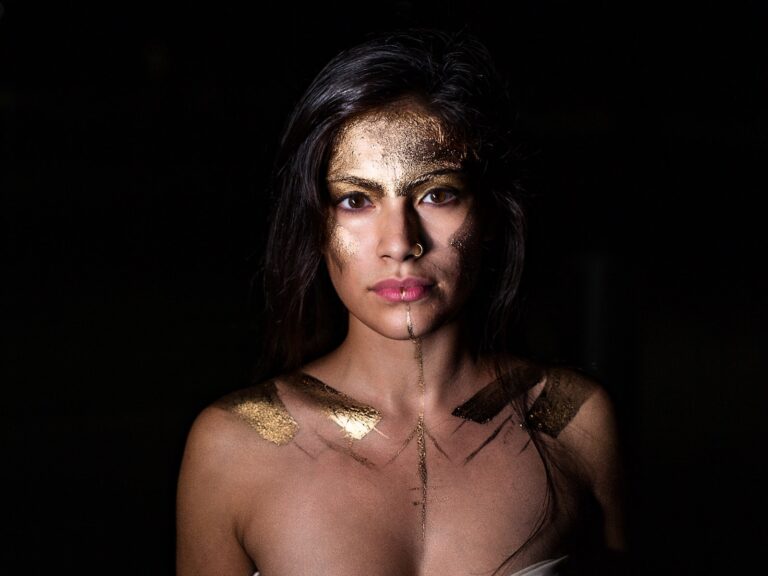
One of my favorite role-playing games is Knights of the Old Republic II: Sith Lords (2004). The second one in the series tends to get less attention than the legendary first installment: Star Wars: Knights of Old Republic (2003). One of Bioware’s (the game’s developer) seminal works, KOTOR I is considered by many to be one of the greatest games ever, topped off with arguably one of the best plot twists in gaming. The second game, Knights of the Old Republic II: Sith Lords, developed by another groundbreaking game developer, Obsidian, takes on a darker, and more penetrative look into the world of Jedis, the Force, and the Sith, set in a galaxy far, far away.
Those familiar with RPG gaming would know that at the start the player is generally given a choice to create their own custom character. Unless the story comes with a pre-built character (e.g. the Witcher); role-playing games require players to build their desired character who they would play through the story with. In my second playthrough of KOTOR II, I set out to play as a Dark Side character through and through. No middle ground. And just to mix things up I thought I might play female.
It must be said that this is not something I usually do. As a fan of RPGs, this is a choice I am often faced with within gaming, and when faced with the choice to build a custom character, I invariably opt for a bloke. Specifically, a character who is Male, White, and Straight. The reasons for this ought to be self-explanatory bar one, which I will not get into here (take a guess).
My decision to go with a female character was influenced by my wish to do something different. For fans of the game, Darth Revan, the main character of KOTOR I is male, though you could still play as a woman. So playing as a female in KOTOR II, and this is credit to the game design, introduces some interesting changes, notably in conversation. Since this is a dialogue-driven story, what you say really does matter. But my choice to go with a female character was also influenced by another factor.
As I was browsing through the character creation screen, the look of a female Consular caught my eye. I mean it literally did. A customizable option that I could play around with (in terms of her looks and attributes, and strengths): That of a pretty, lithe, raven-haired girl. I skimmed through a few other character design options, but my mind was already made. So I confirmed the choice and set away to start my journey, playing as a young, fit, female character.
The decision to pick a female character had almost everything to do with her looks. That is to say, if I was only faced with the option of playing as an obnoxious old, troll, rather than as a young, attractive, female-in other words someone doable-I would not have taken this route. I don’t know about you, but the idea of watching, or playing as a hot female character is a bit of a turn-on. Something I haven’t outgrown since my early teens.
Speaking of the look of the character and of the world as a whole, KOTOR II is a sixth-generation game with dated graphics, which were pretty sub-par even for its time. Yennefer Vengerberg this is not! But it was good enough. And as the game started I was soon rewarded for my decision: as the character is made to run around in her underwear, doing mundane tasks, at the start of the opening act.
Alright. So what is this essay about? It is, as the title says the problem we have with the growing adoption of a particular story/character arc in popular culture. One that revolves around the presentation of women, usually young women, but also increasingly older and more “diverse” females, in positions of power, visibility, influence, and importance. One that invariably seems to come at the expense of positive portrayals of men, or any men at all. (Note the difference between the words ‘strong’ and ‘positive’). This is problematic for a variety of reasons. Notably that the increasing adoption of this trope comes invariably at the expense of good storytelling, character development, and ultimately a solid final product: movies and TV shows that are worth your viewing time.
This is a controversial point to make. Since much of popular culture, certainly in the Anglo-American (i.e. English speaking) world has gone headlong in this particular direction: that of pushing for greater representation of women. A trend that has only picked up in recent years, with the rise of remakes and reboots. With their growing presence, there have been a number of defenders, notably among the journalistic class, for this new “creative” direction adopted by writers for movies, TV, and increasingly even video games.
In this essay, I will break down the main problems with the strong female character arc, in ‘theory’ and practice. As I seek to understand the factors that are driving these changes at a superficial level (activism), to the deeper, more controversial factors that underpin these shifts in entertainment and popular culture.
A Short ‘History’ of Strong Female Characters
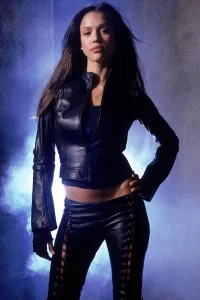

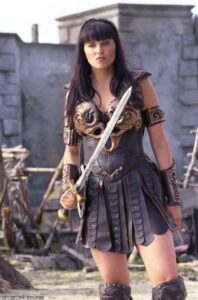
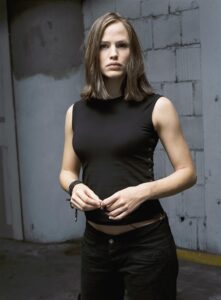
The idea of positively portraying women on the big screen and elsewhere is not a new one. Based on my experience, the notion of a tough, independent woman who can do pretty much anything a man can do, has been around for some time.
From the late 90s and through much of the 2000s, TV shows and to a lesser extent movies, featured a number of women in leading roles: Roles that showcased females who faced real conflicts, who took on opponents (male or female), whilst being portrayed as competent, independent and principled. To run through a list of these shows that featured a female lead character we have: Xena (1995), La Femme Nikita (1997), Relic Hunter (1999), Sheena (2000), Dark Angel (2000), Alias (2001), She Spies (2004), Veronica Mars (2004).
There are a number of other shows that I could add to this list: such as The Sarah Conner Chronicles (2008), Judging Amy (1999), Ghost Whisperer (2005), and more. But these are shows I never got around to watching. But the other ones I did more or less, with varying levels of interest. Hey, I was just a kid!
These developments in storytelling, that featured a female lead, that sought to give greater agency to the female characters by placing them in positions of significance in line with the broader narrative, could be seen as a natural shift from times past. As it corresponded with the social and economic progress that women were making in the real world: in work, family, and underlying it all, their sexuality. This is a subject for another time, but one of the things that went hand-in-hand with the rise of women on screen was the greater attention placed on female sex appeal.
Such changes themselves were an evolution from the Victorian times and its enduring legacy in the subsequent decades: where women were meant to be prim, popper, and moralistic at all times. (e.g. the early seasons of Downtown Abbey).
The evolution of female sexuality on-screen corresponded to the social advances women were making in the real world. The so-called sexual revolution was a function of technological change, in addition to the effects produced by various social movements of the time, notably feminism. A point that is engaged quite persuasively by political scientist Francis Fukuyama in his work The Great Disruption (1999).
Hence the progress of women on screen, advanced by intellectual properties (IPs) like the Charlie’s Angels (1976), and Wonder Woman (1975), to what is arguably the most prominent film franchise featuring a female lead: Alien (1976)-which btw is one my favorite movies ever-was a function of the advances that women were making in society, and how the social roles of the female sex, and their perception in relation to their sexuality, changed over time society.
Thus the entry of female characters on the big screen and others marked the evolution of female character arcs in visual storytelling; one that corresponded to how women were viewed or wished to be viewed in real life. For during the era preceding these changes, women’s on-screen roles were limited to those of mothers, wives, girlfriends, and importantly damsels in distress, whose function was to support the heroics of the male characters. The rise of women on-screen corresponded with the negation of historical limitations that were tied to women’s roles; a change that was welcomed for the most part by both sexes.
Over time, the use of the females as a vehicle for visual storytelling brought with it elements of glamour, amusement, and titillation; one that only the fairer sex could manage. Which added to the all-round guilty pleasure that went with viewing, for the most part, young, attractive women, often in sexy attire, doing their thing.
Things that were, at the time were seen as brave, liberating, and appealing to the masses. This pro-sex sensibility as it relates to women, in its heteronormative orientation, is today increasingly being viewed as anathema to the concept of strong female character, and underlying it, female empowerment. The very things which were once considered progressive in a different time.
As there has been no shortage of TV shows over the past few decades that featured strong women in a leading roles. Even TV shows that starred a male lead character usually featured a competent female in a supportive role (e.g. The X-Files (1993). And when one speaks of female characters in these series, they were strong in a more holistic sense. For in addition to being able to do what they had to do: develop plans, uncover secrets, pursue criminals, and put themselves in physical danger; they also had time for the more mundane things in life: like falling in love, getting pregnant, cheat or be cheated on, and most controversially, take their clothes off from time to time.
In other words, the ‘strong female characters’ of that time were real human beings. Women, who in addition to using their wits, smarts and qualifications, were also in touch with their femininity and sex appeal. Or in a word, their biology (e.g. the Femme Fatales).
In addition to solving problems that helped advance the plot, these female characters were also actual people who faced real challenges close to home. And had to rely on their wits, experiences, relationships, limited resources, and even inadequacies; to overcome the challenges in life, both at the personal and professional level.
However when one looks at the changes that have taken place in the entertainment landscape in recent years: That is in the post-2010s era, notably after 2014, a number of shifts have taken place when it comes to the portrayal of women on screen: the big screen and elsewhere. Almost all of them are problematic in that they deviate from this historical standard.
What Has Changed
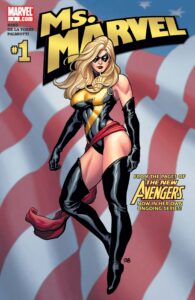
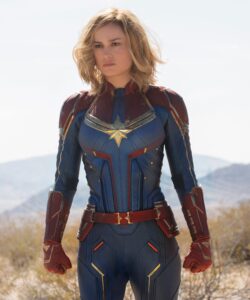
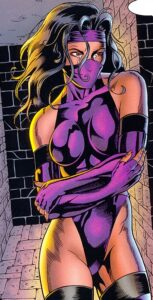
To understand what has changed in the portrayal of women on screen: in movies, TV, and other media, including video games and even commercials, let’s start by looking at what I consider to be the broader trends that have come to dominate this sphere.
If one takes movies as an example, the medium where these progressive changes have been most noticeable: ‘progressive’ in terms of what the term implies literally (gradual change over time), but also, and problematically, politically. To break this down, I will provide examples of key characteristics that define these ‘strong female character’ arcs, notably in terms of how they differ from female lead characters of old (speaking of the late 90s and 2000s). These ‘narratives’ that govern the presentation of female characters on-screen today, over time have become virtual archetypes, that producers and writers have started to adopt, or, if one speculates, have been instructed to embrace.
Now the characteristics that define a strong female character have been engaged elsewhere, with a number of YouTube channels that specialize in movie/TV critiquing having honed in on this point in recent years. Here I will outline their main features with relevant examples from movies and TV. This is important, as a grasp of these will help us better understand the problem at hand, and then answer the question: Why did we get here?
The Impervious Sex

This relates to the female character with no weaknesses, also known as the Mary Sue. Now there are number of definitions of what constitutes a Mary Sue, but the absence of weaknesses at any level: emotional, physical, intellectual, and beyond, and hence is someone who doesn’t need to work for what she has or achieves, is the definition that works.
If one looks at popular culture today, examples of these Mary Sues in a leading role are on the ascent. The most notable example here is the character Rey from the Star Wars sequel trilogy, who in many ways helped popularize the term. The problem of Rey has been dealt with extensively in relation to the subject of the sequel trilogy: from her overpowered status: where she beats a trained Sith apprentice Kylo Ren with no apparent training or knowledge of Force powers; her possession of Force abilities without any foundation in her history, personal development (unless one considers the ridiculous retcon of Emperor Palatine being her grandfather).
Rey can be considered the archetypal Mary Sue in that she is the lead character in one of the most prominent film franchises ever, and features in a set of movies where in addition to herself, virtually all other females are also portrayed as good, capable, moral, competent and praiseworthy: Vice Admiral Holdo, General Leia, the Heroic Rose Tico who wants to avenge her sister’s death, Zorii Bliss, the leader of the Spice Runners of Kijimi, etc.
Speaking of Rey, her ability to fight off the raiders who wanted to take BB-8 in Jakku, piloting the Millennium Falcon, blasting Storm Troopers left and right seemingly on her first time out. And upon her capture by Kylo Ren in Takodana, the events that follow only strengthen her already imposing character. Where she easily counters Ren’s mind probe (when Poe could not) and then escapes without any help, thanks to her newly ‘awakened’ mind-trick abilities. As the trilogy continued, the examples of her powers kept piling on. None more so than her ability to literally move mountains (or at least parts of it) to even heal a dying man.
Point is, at no point in the course of three movies did Rey ever find herself in real trouble, encounter a challenge she could not solve, or face a difficulty that would truly test her character, resourcefulness, determination, and capacity to emote. And even if that seemed to be the case (in Snoke’s throne room in TLJ) she gets help from her arch-nemesis, who turns on his master for… reasons!?
Rey’s portrayal as a strong female character is one that verges on presenting her as superhuman. Which I guess is understandable in the fantasy world of Star Wars, but problematically this particular arc of strong female characters without discernible weaknesses is so ‘unbelievable’ that it eats into the believability of the narrative even if it is a fantasy. This is a problem that applies even if the sexes were reversed. But as things stand, females are the only sex that manifests the Mary Sue aura.
Now, what do I mean by ‘a problem’? You see, when you have a character, the main character, upon whom the plot rests, who doesn’t fail at anything, exhibits no shortfalls in character or capability, and is shown to be totally resilient to all forms of hostilities, both from within and externally; it robs the story of its power. There is no fear factor, danger, or uncertainty that the character and by extension the viewer needs to deal with. Since people don’t go through life being impervious to problems, this character arc becomes unrelatable and very quickly boring. Especially for men.
Since life is about facing conflicts, overcoming hurdles, enduring challenges, overcoming them, and emerging as a stronger person; movies, TV, and any medium of storytelling no matter how fantastical the setting, requires some grounding in this reality.
The narrative structure that was popularized by Joseph Campbell, ‘The Hero’s Journey’ marks the stages of development of a hero, which is integral to the telling of a meaningful character-driven story. One that invariably involves a rite of passage entailing hardship, struggle, dealing with some kind of loss, overcoming weakness, facing up to the enemy, often failing; confronting demons, both within and outside, and a battle with evil or death. In order to rise up greater and stronger, thus completing the arc, which often comes with cosmic implications. In the world of fantasy and Sci-Fi virtually every major hero goes through this: Neo, Harry Potter, Anakin, Frodo, Blade, Spider-man, Batman, etc. Because he must.
So with this tried and tested formula of storytelling at the back of one’s mind, having made to put up with a stream of this cheap fan fiction (which is what it is). Of the strong female character who does not need this process of growth, as someone who has already figured everything out, and mastered all skills (e.g. Molly from Men in Black International (2019). What this comes down to is a form of a storytelling that is antithetical to the hero’s journey. One that is being paraded around as some ingenious form of storytelling. Which the rest of us, particularly men must accept and celebrate. This is aggravating, to say the least.
To think of a female character in a leading role, whose story was built on her ability to encounter challenges both personal and professional, in her quest to stand up to adversaries with powers that are magnitude greater, one who clearly does not fit the concept of the imperious sex is Ellen Ripley from the Alien movies.
Her character arc across four movies is about her working through obstacles, often seemingly insurmountable, to reach her objective, which is invariably one of survival, for her and other humans. Throughout the Alien movies, we are seen Ripley face obstacle after obstacle that truly challenge her. There are moments where she is made to show real emotion, power, fear, and vulnerability. And if you include the scene of her walking around in her white underwear, her sexuality.
Speaking of her vulnerability-one that is woefully lacking with female representations today-In Alien 3, Ripley finds herself in some prison planet populated solely by men. And at one point she is cornered by a few sex-starved intimates and is about to get r****, only to be saved by some good Samaritan. Would you think of that? A female lead character (in a Sci-Fi setting) finds herself in real danger and needs some help, from a man of all things. Needless to say Ellen Ripley from the Alien universe is far more appealing and relatable as a character than Rey, to men and women.
The Masculine Sex

One of the features of modern female-led story arcs is how they have come to match and in many ways mirror roles that were traditionally played by men.
2015’s Mad Max: Fury Road, which actually stars Charlize Theron as Imperator Furiosa, and not Matt Damon as Max Rockatansky or the Mad Max, is a case in point. The latter, who is essentially reduced to a side character in his own movie (a recurring trope in many shows that feature strong female characters), with the film being about Mad Max in name only.
The purposeful downplaying of Max aside, what stands out about the movie is the portrayal of the lead female protagonist. If one breaks down Furiosa’s character, besides the fact she is female there is very little about her that is feminine. Starting with her look. Besides being bald Furisoa is scrawny, with no visible curves; her face is covered in soot; she is dressed like a ragamuffin and if you look closely, her breasts seem to have been plastered in.
All of these are turn-offs for men who like women. I guess the producers probably decided having the woman doing all of those action scenes with her boobs and ass flying around would not produce the most compelling effect. And the other ancillary point given everything else that is going on is that in the course of the two-hour movie Furiosa never hooks up with her male counterpart. In other words, Furiosa the female lead of Max Max: Fury Road is male in everything but name.
It would have made sense for the producers to stick with the actual male protagonist of the movie, given its historically male-centered, high testosterone narrative. In terms of the protagonist, it is a role that demands the character to operate in physically demanding situations, face constant danger, and be able to take risks and perform challenging feats that require a physiology that is attuned to such demands. And such things do not warrant a lanky female, with a sizable cleavage, flowing hair, and an ass which… Well, you get the picture.
But having made the decision to push the narrative via a strong female character; the movie curiously does venture to employ the titillation card (albeit slightly) with the female side characters (sex slaves). Those that Furiosa is tasked with rescuing.
The question is why not just simplify the equation and go straight for a male character? Men, physiologically speaking, provided they maintain a fitness routine, and have undergone some training, are naturally better suited to carry out such a demanding role. Why not allow Mad Max to play the role that he was supposed to carry out in his own f****ng movie!
Well, in the times we’re in, where gender equality is all the rage in the West, the need for positive representations of women in popular culture has come to entail the presentation of females who are more like males: in terms of their outlook, persona and by extension, even their physiology.
These strong female characters, in the process of playing roles traditionally held by men invariably come to embody characteristics that are typically male: physical strength, speed, competitiveness, propensity towards danger, and conflict. All of which involves putting oneself at risk, with little concern for the limitations born of their biological reality, not to mention the social, cultural, and underlying it all, the psychological dimension.
The idea of presenting us with strong female characters in practice essentially entails swapping out the personnel for roles that were traditionally played by those of the opposite sex. But in doing so the female is quite naturally robbed of her feminine character, as she is made to struggle in situations and environments which don’t mesh with her being. Which are functions of her biology (radical stuff). Of course, the argument can be made, and it is often done so in present times, that behavioral norms that are understood as feminine or masculine are the products of socialization and not biology. The right answer is obviously both.
What is more problematic, from a storytelling standpoint, is that the lack of femininity in strong female characters results in a number of predictable and uninteresting outcomes.
First, as already noted, such characters invariably take on roles that were traditionally held by men. Those involving: action, adventure, combat, etc. In sum roles that embrace a stoic ideal. One that is, to be politically incorrect, best suited for men, at a physical and psychological levels. But if one follows the storylines of these strong female characters, the stoic facet that underpins these masculine roles are often bypassed via convenient plot points that make the female characters incredibly smart, unbelievably adept, or impossibly powerful.
A Mary Sue in other words. In relation to the previous point on the ‘Impervious Sex’: where the challenge of dealing with the complexities that arise from having females in physically and emotionally challenging situations is negated by making the girl effectively a superhuman.
So what we are dealing with here is a strong ‘superhuman’ female character. Or in other words, a robot. One that is not only unfeminine but increasingly less human.
Biology Be Damned
An accompanying problem with the de-feminization agenda that underpins these female-led narratives, is their deeper opposition to female sexuality.
Since it is the aim of producers and writers to promote stories where female characters take on a role that was traditionally played by men in the name of gender equality; but in doing so, it also helps meet the secondary goal of distancing the female in question from functions which correspond to her biology and their social outworking: Her girlhood, womanhood, and femininity, which are tied to it, are actively be downplayed in favor of the all-conquering female, who doesn’t a man.
In other words the modern definition of a ‘strong female character’ is one dimensional: That is to be anti-feminine, and paradoxically, anti-female. And this narrative presented via the storytelling medium becomes a social message for the masses and posterity.
When one considers female characters in lead roles of the past, a key point was that despite what they had to do in relation to events of the main story (i.e. those involving their wits and action), the reality of being biologically female and what it entails socially and relationally was not ignored.
Padme Amidala might have wielded a laser pistol in the battle of Geonosis, but she did get busy with Anakin and bear him twins. Xena may have been a warrior princess, but she was also a princess in a traditional sense: attractive, desired, and didn’t mind showing a bit of skin from time to time. In Alias, if I am not mistaken there is even a plotline that deals with Sydney Bristow’s pregnancy. Uma Thurman may have cut down dozens of Yakuza thugs in almost superhuman fashion in Kill Bill (2003), but she did put down her sword when she realized that she was with child.
The point is, in female characters of old, the women were presented not only as capable action heroes but also as well-rounded human beings. Being a woman, meant exactly that: being able to deal with your biology and what it entails in the social, emotional, and relational spheres.
Not so anymore. The strong female characters of today are so high and mighty that don’t even seem human. The femininity, and underlying it the biology, of the female lead and side characters, is purposefully downplayed. So that you are left wondering if these strong female characters were played by women or something else!
But wait, that is actually what these people seem to have in mind. There is, what seems like a trend, in strong female characters who are not only lacking in the femininity department but also display strong masculine traits in their attitude and physicality. The new Terminator movie (Dark Fate (2019), which featured an androgynous robot villain: with a schoolboy haircut, flat chest, and scrawny legs is one such example.
In the newly rebooted He-Man cartoon, which turned out to be a show about the female characters (Surprise). The female characters whose names I can’t recall, were not only strong, tough, independent, and always good (even if they were wicked at first), but were also carrying six-pack abs, huge triceps, bodybuilder biceps and if not for their vaguely feminine faces, were males in all but name.
The banality of the strong female character is that ultimately it is nothing but an aping of a well-established character arc that we have seen many times before. The only difference now is that the character is being played by a female rather than a male. And it is that much lesser for it.
The Superior Sex
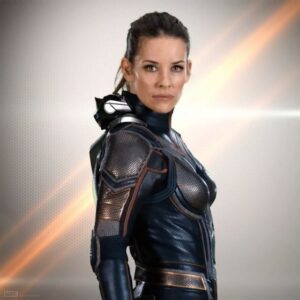
Strong female characters have come to dominate our screens in recent years, in addition to being essentially rip-offs of traditionally male characters, with a notable difference being that the female having not have to endure trials, hardships, and failures that males have to; in turn removing any level of depth that these female-led shows could have. Given the formulaic nature of these strong female movies and TV shows could have.
Where 2 seconds into it, the viewer realizes that the female character on screen is going to be doing most if not all of the traditional functions carried out by the male character. Even if she doesn’t happen to be the protagonist. (e.g. Fennec Shand in Bobba Fett (2021), where the female side character is essentially the muscle of the show, doing most of the fighting and thinking). F***ing joke.
So the answer to this novel problem of predictability and lack of creativity in storytelling in these female-led shows; or for that matter in those which do not feature a female protagonist, but are nonetheless dominated by strong female side characters, who do most of the ass-kicking. Which increases in number and prominence with every episode.
Into this mix enters the new theory: that the art of portraying a strong female character is only as effective as the stupidity of male characters who are around her. The sycophantic males are written into the plot for the sole function to support, follow, and elevate her already superior knowledge, ability, and status. This is done so by presenting the inadequacies of the males to be the defining aspect of their character and to be a foil to the greatness of the females.
Switch onto any show that features a strong female character: which is not always a physically imposing creature; but is one who is invariably smart, competent, able, fearless and has virtually no weaknesses, and above all has little time for men (no sex and relationships please! Or at least approaches them very pragmatically and indifferently) and you are bound to run into some nitwit pencil pusher who behaves around the female character as if he is yet to see the insides of a woman’s panties, and looks upon the female character-who is usually his ranking superior or someone more qualified, as some demigod, he is called to venerate and serve.
From the rootless, asthmatic, bumbling goofball Finn, whose only purpose in life it seems was to run after Rey shouting her name like a f***ing idiot. To the emasculated oaf king, Jon Snow, who forgoes his destiny to become the ruler of Westeros, and decides to run after the vindictive Danny, like some servile whelp, unable to think for himself, obeying her outrageous commands, whilst reciting the mantra, which becomes the defining aspect of his character for the last two seasons ‘Mah Queen’.
This is a problem that even applies to shows that feature a male protagonist (e.g. Designated Survivor (2016). A political drama featuring Kiefer Sutherland. As far as TV shows go, is quite the downfall given his glory days as Jack Bauer in the hit series: 24. To, what I think is probably the most disgusting portrayal of the male lead character: The retconning of Neo as The One, in the abomination that was The Matrix Revelations (2021).
In the new installment, Neo is not only not dead (so much for his Christ-like sacrifice at the end of Revelations), but all of his accomplishment in defeating the Machines and liberating humanity as The One has been undone.
Undone because the story demands it. Neo has gone from being a virtual Messiah (literally) to some automaton who lives a mediocre life until he is rescued by a pencil-necked strong female character with blue hair (you can’t make this sh** up), and with it the story of Neo’s onscreen deconstruction begins. (The movie ends with Neo and Trinity flying away together). For in the spirit of (gender) equality, not only must female characters be elevated, often without merit to that of better men; but long-established male characters need to be broken down and portrayed as losers or weaklings that need saving by strong (sexless) females.
The Sexless Sex

It comes as no surprise that the logical endpoint of the strong female character arc is the decapitation of her sexuality.
Since sex and personhood are closely tied, and given what passes for strong female characters today are those which ape the roles played by men, combined with the political urge to present (all) women not only as good and capable but necessarily better than their male counterparts. A reality that warrants that female characters are rid of whatever that ties them to the vestiges of historical sexism, and men by extension: their sex appeal.
It is no secret that in recent years movies and television shows, have revolted against the idea of showing t**s and a*s. Or even just old-school sexy: with girls in lingerie or bathing suits. Unlike the good old days (and they were good for more reasons than one), movies and increasingly even TV shows, besides the some which ‘specialize’ in that arena, don’t value the beauty of the feminine or seem to be actively opposed to it.
Today the idea of elevating a woman’s sexuality either as a plot point or as an element of comic relief, or as pure sensuality just for the heck of it, has waned. From the sexless Mary Sue Force wielder Rey (again Star Wars), who besides managing her first and only kiss of the trilogy with a man who ends up dead the next second, is attired like some monk-like outfit, with all of her lady-parts carefully shielded from heteronormative, I mean prying eyes.
The Charles Angels reboot of 2019 is another example is this shift away from femininity and sex appeal. The film other than having a diverse (or more diverse) female trio (since the last ones had a female of East Asian descent), proceeded to, presumably in the name of equality, replace the traditional male Bosely with a female one. Which happened to be played by its director Elizabeth Banks. But that was not the only change in contrast to the Charlie’s Angel movies of the early 2000s.
A period that was not too far away in terms of time-were a fun mashup of humor, light but intriguing action (women doing stunts in high heels doesn’t get old), with an amorous tone. The characters often find themselves with little clothes on. Which fit well with the idea of having three young, fit females playing a lighter version of the femme fatale role.
Nothing of the sort here. The new Charlie’s Angels movie is not only devoid of sex appeal, the women themselves are presented as totally detached from the world of men and relationships. None of these women get banged or enter into any romantic relationships with the men.
And speaking of the men, who all fall into one of three categories: 1: Bad guys who want to kill you but aren’t good at it. 2: Old men who want power but are terrible at getting it. 3. Men who don’t like women, because they are… Men? By the way, in case I miss it, there is this is one guy (ponce) who works for the Angels. Some weirdo-eunuch whose lobotomized brain only exists to unquestionably serve the women.
There are other examples I’m sure the reader can think of others that validate this trend of declining on-screen sexuality. That is unless the kind of sex in question is one that pertains to the LGBTQ crowd. Which is a subject for another time. But that debate does in certain ways connect with this. The rise in the strong female character arc has gone hand in hand with the growth in more “diverse” characters: ethnically and sexually. Which in turn has had an adverse effect on the onscreen presentation of sexual polarity. And its destruction appears to be the real aim here.
So where does this leave us?
Since a certain segment of the market is likely to welcome these changes. Notably, the mainstream media heads, gaming journalists, and social activists of various stripes; are likely to see these changes as a sign of “progress”: As a step forward in the advance of women’s rights, or as an attack on the heteronormative patriarchy.
Whatever the reasons may be, what is lacking in this debate on the rise of strong female characters in popular culture, and the accompanying decline in traditional male characters, are forces that have contributed to this social phenomenon.
The Cause: Anti-Sex Feminism

If one is to formulate an explanation for the rise in popularity of the strong female character trope, the feminist movement is the place to start.
The women’s liberation movement, particularly in the Anglo-American world has in recent years moved on from fighting for equal rights for women to the importance of attaining equality of outcomes in various spheres of life.
An imperative of the modern feminist movement is that it is no longer good enough that women have the freedom to pursue their goals in whatever field of interest or area of expertise, but that those industries and spheres of activity, over time, need to reflect the trend of an increasing number of women entering the specific arena of work, and in time be elevated to positions of authority. Equality of outcomes in other words.
During the 2013-2014 period, I recalled the rise in focus on the need to increase the presence of women in leadership positions, to boost the number of females doing STEM subjects (science, technology, engineering, and math), the importance of having women on boards, and ultimately the need for greater representation in the halls of power. With its main source: politics.
A trend which has continued in the real world, where in recent years the number of top political positions being held by females: With the England, Scotland, Finland, New Zealand, Slovakia, and Taiwan electing female leaders during that period. The United States too would have been on the list, if not for the upset win of you-know-who in 2016.
Before the reader interprets this as ‘the problem with female leaders’-which come to think of it, may not be a bad essay idea-the aim here is to understand the growing trend of having female characters in stories, in a leading role and elsewhere; which seems to be mirroring a broader trend in culture. Where there has been an incessant urge to promote female leaders, and that somehow doing is a worthy end in itself.
The need to give women a prominent position in fields and positions of significance (no one is talking about gender equality in deepwater drilling or coal mining) is indicative of a broader cultural shift that has been taking place in the West. And the world of entertainment appears to be yet another arena that is falling under this spell. Problematically, the need to promote females to positions of power and influence in practice has meant the effective replacement of men, who historically have held such roles.
What is often missed in this gender equality activism of the present times, is that in order for women to attain these positions of power and influence-which incidentally have been built on the works of men-requires a certain persona, attitude, and mindset. One that in practice requires whoever takes up the role to start embodying those very qualities: Masculine ones.
Unsurprisingly the women who rise to these positions essentially become female versions of men: ‘women who wear pants’ in other words. This is true for virtually every woman who pursues a competitive career in fields where the gender disparity is most prominent. In politics, the corporate world, technical fields, etc. The main and necessary casualty of all of this is the feminine.
If women are to rise and hold positions of power that were once held by men, they need to take over from men. Causing, I would argue, a necessary break with their femininity. Of course, some women are better suited for these sorts of roles than others, but when one speaks of those who do rise to the top and are able to remain there for a significant period, these persons are not likely to be the most feminine, ladylike and by extension, from the standpoint of masculine men, desirable.
But why is this happening?
Trends of whatever type don’t occur without reason. Speaking of feminism, which is a movement that has been around for, I don’t know, hundred and fifty years or so is one that is characterized by enduring activism on part of its proponents. The push for gender equality in areas like corporate leadership, and political representation, has now found its way into popular culture. And not by accident.
A TED video by a woman named Stacy Smith, titled ‘The data behind Hollywood’s sexism’ engages the apparent disparity between the male and female representation on screen. Her numbers are on point for the most part. But what is problematic however is their association with “sexism”.
Sexism, or the prejudice or double standards towards one sex, can be due to a number of factors. Most of it is irrational and emanates from a sense of insecurity, fear of loss, or prejudice. The lack of females in lead roles historically may have been due to an array of factors: funding, writing, target market, production objectives, studio expectations, the quality and availability of actors, etc. Sexism could be one of them. But not the most significant.
The other point the TED speaker raises is the need for women to be more present on screen: Meaning they are saying and doing things that go beyond the subject of relationships. The push to have more women on screen has gone hand in hand with the need to present females who are not engaging in discussions that concern men, notably in a romantic or sexual way. Known as Bechdel Test, which apparently measures this very thing.
Not only should there be more women on screen, preferably in a leading role, but they should also be less concerned about men in their thoughts, conversations, and actions. And this means the female characters are going to have less time for men. Case closed.
If a girl is going to get entangled in romantic relationships at any point in the story, then her thoughts and actions will invariably be swayed by them. This means her goals and her character are likely to be affected. Hence the best way for a movie to pass the Bechdel Test: that is to show women as beings have more to them than being the objects of desire, is to minimize the time they have for relationships, sex, intimacy, and desire. Or anything that has to do with… love?
The problem is that in having women play roles that shuts them off to men in a romantic or sexual way, produces the necessary effect of undermining their femininity and sexuality. Think about it, what is the best way to ensure that guys are not going to take an interest in a girl romantically? Make her less or un-desirable: By dressing her up like a sexless nun, making her an obnoxious know-it-all, presenting her as a petulant bossy-boot, or a purple-haired ostrich in an evening gown whose job is to ‘mansplain’ the dangers of ‘mansplaining’ to all men.
The other less inspiring development that has come to characterize the phenomenon of strong female characters in recent years is the rise in strong older female characters.
Genius isn’t it. What better way to turn off the possibility of sex and romance on-screen than to fill the screen with hags and crones. The Witcher and the Mandalorian TV shows are notable in this regard, with each show featuring an uncannily high number of sexagenarians and septuagenarians. Since the feminist movement is all about fighting injustice, so it is only natural that it extends into fighting ageism and able-ism when it concerns the presentation of women. This is fine, but the downside is that these changes come as a marked turn-off for men.
A word that underlies much of what the feminist movement has come to represent in present times is ‘fighting’. Feminism today, possibly since the second and third waves, in the spirit of promoting equality and justice has fundamentally become a force of opposition to the established order.
It is not enough to advance the message of greater female representation on-screen. But it is a selective and an increasingly divisive conception of women’s empowerment. One that has little to offer heterosexual men either in terms of viewing pleasure with respect to the female characters, but also with respect to the positive representations of men on screen. The thing that male viewers instinctively connect with.
Since a necessary outworking of this grand design to have more strong female characters on screen, old or otherwise. The consequence is that it works to replace or undermine roles, and for that matter characters (Luke Skywalker) that were held, played, written, produced, and directed by men. Leading to, what I described in another essay, as the ‘artistic abolition of men’.
The Unmentionable Factor

So why is this happening? To simply cite ‘feminism’ the social movement, ideology, or theoretical framework is not adequate.
That is to simply point to the advances made by this global movement and the effectiveness of its activists in politics and culture does not suffice. But before I tell you what that is, and the inevitable pushback that it is likely to garner, I would like to state in advance that this is not meant as an attack on people who may identify as such. This is purely an analytical point, that like others made in my other essays, you are free to oppose or reject.
So the reason why there has been One: the growth in the popularity of strong female character arcs in popular culture; and Two: why most if not all of these strong female characters fall somewhere on the sexless, loveless, humorless and to invent a word: ‘youthless’ spectrum, is that this change has come on the backs of, and in many ways is a reflection of the gay rights movement, and underlying it, the acceptance, embrace of homosexuality. To be clear, my points are not intended to imply or insinuate anything homophobic or bigoted. These are observations.
Now to the explanation. Consider this: why do strong female characters, almost to a point, are portrayed as inherently unattractive or less attractive to men? The girl who kicks ass is one thing, but one who does not show any skin (at least where it matters), does not exhibit vulnerability or want (don’t hold my hand), has no time for men, does things that are traditionally done by men (running, jumping and fighting bad guys), is something else.
The fact that strong female characters do not show weaknesses removes the need for a pillar of strength, or the role of comforter. The girl has all the answers to all the questions, and is able to solve her own problems, thereby removing the need for a leader.
Effectively the strong female character succeeds in negating the very things that attract women to men: heroism and accomplishment. As each of the qualities that strong female characters embody puts them at odds with traditional male characters, negating the chance for the complementary of the sexes. The sort of things that are dismissed as relics of a sexist era; the remnants of a patriarchal age that are best done away with.
But why exactly are people thinking this way? What is driving the producers and writers to adopt and advance these viewpoints, so determinedly? Look at it this way: what kind of girl believes she doesn’t need a man? What kind of woman ignores or purposefully undermines her femininity (short hair, short nails, no make-up, no skirts, no visits to the saloon, nothing pink, white, or rosy)? What kind of woman is not enthusiastic to be in the company of men, or at least prefers the company of women over men, at most times? And I am not just talking about romantic partners.
Going further, there is the question of sexuality in its relationship to age. Note that the kind of women who get engaged in gender activism tend to be on the older side (invariably post-menopause).
Kathleen Kennedy, the president of Lucas Film age 68, and Stacy Smith, the woman who gave the TED talk on sexism in Hollywood, are well past middle age. Needless to say that none of the prominent feminist intellectuals today are in their 20s and 30s. And it is a fair conjecture that those who are feminists started to embrace the spirit of gender activism as they began to near menopause.
Emma Watson, who has become something of a feminist icon for the modern generation over the past few years; but if you notice, her gender activism has corresponded with the advance of her age. The Emma Watson of 2021-22 is more feminist than the Emma Watson of 2014. And the Emma Watson of 2009 is… well not a feminist.
It goes without saying that women who start dressing, thinking, talking, and behaving in a macho, I-don’t-need-no-man kinda way, produce an aura that is distasteful to men. At least the masculine, heteronormative, take-charge kind of men, who like the idea of the pursuit, courtship, and to use the unpopular word: seduction.
A female character who kicks ass is one thing, but one who does this whilst carrying herself as if her lady parts are locked under a spiritual chastity belt is something else. The kind of masculinized female archetypes that are being promoted in movies, TV, and even video games are only going to appeal to the sort of men whose masculinity and sexuality are out of sync with their being.
If you think about it, the whole strong female character arc: that of women who don’t need men to save the day, or save anything, amounts to a big F you to men: the sort who prefers the opposite sex to be portrayed in a certain (dare I say authentic) way. One that corresponds to, and supplements their femininity (e.g. Terran medics in Star Craft (1998).
However these shifts, such as having more butch and androgynous type females (or otherwise) characters in a lead or prominent role, also qualifies as a wink to females who rather be saved by another woman than a man. In other words, an underlying force that is driving the push for more strong (i.e. sexless) female characters is a distaste for traditional masculinity. Masculinity that corresponds positively with heterosexuality.
Going further, the strong female character arc is one that is often accompanied by men who are deliberately presented as dumb, foolish, incompetent, needy, and for the part most hopeless. Which, to my mind qualifies as a distaste for masculinity and by extension men as a whole. In other words, there is sexist, or to use the word, misandrist strain underlying the strong female character narrative, and presumably the disposition of those who advance it.
Think about it, why does the elevation of women on-screen invariably take the form of replacing male roles with shallow female imitations and/or for it to be supplemented by male characters who are presented in a pathetically demeaning way? Why seriously?
If men are made to look like a bunch of witless oafs, it logically makes them an irrelevant or insignificant addition to the plot, story, and narrative. This means the only reason why men are even included in the shows that adopt the strong female character arc is for them to (further) elevate these sexless women.
The newest Picard (2020) series starring the legendary Patrick Stewart is a case in point. The sci-fi show besides its popular lead character features around eight or so female characters in important roles. All of whom make the great man, in his own f***ing show look like a damn loser. The mantra that governs this business seems to be this: present female characters as domineering bit***s, one that works to rob men of their power and status, which logically entails the undermining of their sexuality. Their (our) heterosexuality.
Biology The Enemy

The rise of women on screen has followed a very purposefully anti-masculine, anti-traditional, anti-heternormative trajectory.
The presentation of female characters as not only good but also as inherently superior to men is a point that even holds when female characters are presented as villains. When the storyline involves a morally compromised female character, her villainy is understood to result only thanks to the designs and machinations of men (e.g. Dr. Poison in Wonder Woman 2017).
This is probably a topic for another time, but one of the underlying narratives that drives the strong female character arc is that women cannot only do any wrong, but they can’t be wrong. Bad as in immoral (e.g. Cruella (2021).
The causes of this worldview-which it is given its pervasiveness-the whole gender equality movement, which is code for the elevation of women over men, operates according to zero-sum logic: Where the weakening, undermining, and eventual removal of men from the limelight is not only necessary, but it is the view as good. Morally good. For if heterosexual men, owing to our role in upholding the patriarchal system that (supposedly) exploits women (knowingly or otherwise), then it follows that the vilification and undermining of men is a natural and morally acceptable step.
The pervasiveness of the strong female character arc or better ideology has started to affect the gaming world as well. This isn’t a surprise, given that the Gaming industry in the U.S is bigger than the movie and music industries combined. The gamergate saga from 2014 is a case in point: where the so-called outcry against the sexualization of women on screen, and the widely publicized gender activism, eventually gave us the abomination that is The Last of Us II (2020).
One of the most anticipated games ever, where the lead male character from the first game is brutally murdered by an androgynous musclehead at the start, who the gamer is then compelled to play with. The other lead female character turns out to be a lesbian (and we are not talking about the adult industry version of ‘lesbians’ guys).
Not that I necessarily have a problem with diversity and representation, but given that the main gaming demographic for AAA games are heterosexual males in Western countries, these additions seem like a very deliberate F**k you to this particular (and vast) demographic. Not only to our expectations as gamers but to what games represent and males seek: masculinity, heroism, heterosexuality.
But the question again is why? Why is this happening? The de-sexualization of women and its homosexual connection I have already touched on, but there is another, more biologically ingrained factor that corresponds to sex and sex differences. Menopause.
Frustrated Old Women who Hate Healthy Young Women
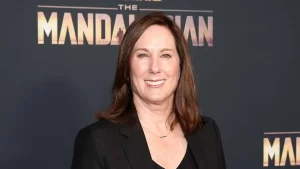
The underlying factor that is driving the demand for strong (sexless) female characters is an ideological one. One that is at a deeper (or deepest) level born of biological realities, and how certain women cope, or fail to cope with them.
You see women realize rather quickly (usually in their late 20s and early 30s) that they are not gonna stay young and attractive forever. Unlike men, females come with a ticking biological clock that winds down fast, especially after around 35. My conjecture is that women when they near the period close to their 30s, who haven’t yet ‘settled down. Settled down with a good man, nice ring, house, kids, and future economic prospects. The problem is when circumstances in life at a certain point don’t indicate that this reality is going to materialize anytime soon, then the fascination with ideology kicks in.
Look at this problem in reverse. When you have men who have trouble relating to women (no girlfriends, no dating life, and ultimately no sex), it is predictable that such specimens would start to develop a certain antipathy towards that which they cannot have: the kind of women they are attracted to and would like to have. Sour grapes in other words.
The question is how does one choose to respond to this? With women in the West, particularly those who are getting older with an unsatisfactory personal life, or seem to have some history with men, it seems that the feminist movement, notably its sex-rejecting branch: which is the most ideologically virulent, has become the way out.
One that follows the accompanying affirmation with homosexuality. I can’t think of what episode or season this was, but it was a Sex and the City episode, where a female character (not one of the main ones) mentions during some party or gathering that she’s not into men. Describing herself as ‘super gay’, and gives the impression that she was allergic to men (men’s penises specifically).
A reality, that curiously enough also corresponds positively with another phenomenon connected with sex: age. It goes without saying that as women get older, they demand less sex . To a point where once they go past menopause, and in the decades after, their desire for sex basically fizzles out.
Which is one of the reasons why men of the same age range, provided they are well established with high socioeconomic status, pursue younger women, often cheating on their older spouses in the process. My conjecture is that a lot of these women who are calling for strong or positive representations of women on-screen, accompanied by the rhetoric of fighting sexism, are operating out of this mindset.
It is not so much the advancement of women into prominent positions of power, and in the pop-cultural sphere-the advancement of strong female characters on screen. Rather what is really driving them is the need to disempower men. By removing men from the halls and positions of power and/or by delegitimizing their social function by character assassinating them on screen (e.g Luke Sky Walker, Han Solo, Mad Max, Ant-Man). And in the process undermines the sexuality of women: young, attractive, feminine girls specifically. These actors are launching a two-pronged attack on not only traditional masculinity and femininity but on humanity. What is really being undermined is the sexual impulse. You cannot build a civilization without people, which presupposes hot sex between men and women. Which presupposes desire, attraction courtship. In sum the power of sexual polarity.
When you think of a person like Kathleen Kennedy, who to my mind is solely responsible for the s**t show that is the Stars Wars sequel trilogy. Her thinking, I suspect has been a product of this process.
Ms. Kennedy is a woman in her late sixties, who rose through the industry on the back of her relationships with more creative, talented, accomplished, and successful men. Who having been given the keys to arguably the most lucrative, and beloved movie franchise in the world, has gone about turning it into a vehicle for advancing a virulently anti-male, and by extension anti-heteronormative gender ideology. One which is partly born of biological realities. Ironical, despite its supposedly woman-empowering agenda, is actually anti-female vis a vie its anti-femininity.
Ms. Kennedy is married to producer Frank Marshall, (Jurassic World 2015). Here one has to wonder what exactly is driving her thought process: what are the forces that are impelling her to order her minions to sh** on shows that destroy years of story development, undermine and kill beloved characters, by injecting stories with narratives that should best be limited to the halls of (falling) Western academic institutions? This is my theory. It is only a theory.
The Revenge of Pause

Kathleen Kennedy’s fascination with the notion of the capable, sexless, all-conquering, “perfect”, female (for now) hero, stems from an unease she has with the reality that men, young and old, prefer the very opposite in the real world.
She, like most women her age, who are married to wealthy, powerful men, is not happy with her life. Her personal life. Her marriage of convenience to a man whose surname she didn’t take, is a zombie. She is old. Her husband is old, but men don’t stop producing sperm until the end or lose interest in fit young women.
Ms. Kennedy’s personal story is that of a woman who goes home every night to find her husband scr**ing a woman less than half age. A prospect she is content to put up with, as she doesn’t want to lose her marriage of convenience, the (financial) support it brings, and the social stigma that divorce brings, even with the promise of payout and alimony.
Women do this by the way. They stick around with men who openly cheat, simply because the security of being in a marriage with perks is too great to let go. But it has its consequences.
Ms. Kennedy’s husband’s infidelity and her long-sexless marriage (not that it really matters) poison her mind against that which she thinks is the biggest (or second biggest) enemy in her life: Young, attractive women, particularly those with a lot of sex appeal, who unbelievably crave the care, strength, protection, and leadership provided by strong, independent, competent, masculine men.
So she sets out to destroy both. How? By constructing the narrative of the strong female character. One who is the antithesis of what men look for in women: Females who are sexless, and who eventually end up man-less, and ultimately childless. (The fates of Rey and Jyn). So this is my critique of the strong female character. A problem that goes deeper than many knows. And it is probably better that way.

